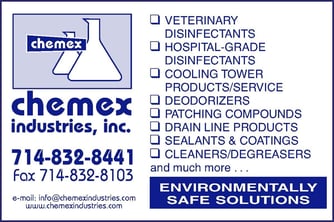The summer of 2015 has witnessed numerous cases of Legionella, typically caused by the bacteria, often found in water sources, such as cooling towers and fountains. Transmission ocurs when individuals breathe in the mist or vapor (aerosolized droplets) that contain the bacteria.
This disease was named in 1976, when a group of American Legion members, attended an annual convention, at a hotel in Philadelphia. The victims suffered from a pneumonia-like lung infection. Six of the original cluster of infected members died.
As recently as September 3rd 2015, San Quenton Prison had six confirmed cases of Legionaires', just one of three outbreaks around the county, that have sickened dozens and killed twenty (20). In July & August 2015, there have been over 124 cases of Legionnaires' disease in the South Bronx. 12 have died. The Melrose House in the South Bronx, also found evidence of Legionella pneumophila, in their water.
The drip pans or condensate drain pans, are a functional part of cooling systems. Condensate is naturally ocurring. The drip pan is in place to "catch" the condensate and route it to a drain line. The very nature of this device, is problematic. Dust, dirt, mildew and soil particles enter the pan, along with the condensate. Additionally, the dark, humid enclosure, with condensate continuously dripping from the A/C coil, provides the ideal environment for mold, fungus, algae and is an ultimate breeding area for bacteria.
The fungus Aspergillus and the bacteria Legionella, both found in condensate pans, are known to be able to transmit through the air.
HVAC engineers know, all too well, that the drain lines can be easily fouled and blockages occur. Not only is it a potential for slip & fall incidents, but the spill can contain pathogenic organisms, making the containment hazardous. Moreover, water damage is quite likely, depending on the location of the A/C units. How often have you witnessed stained carpets, in from of the PTAC units?
Ongoing maintenance preventatives are necessary, to reduce the colonization & establishment of these organisms.


A regular (weekly) PM program of cleaning & disinfecting the drip pans is one method. - But, most engineers don't have the time to visit each unit, as just described.
Pan-Gel Condensate Drain Pan Treatment is your answer to remedy this serious concern. One gel tablet, placed on the pan, will provide up to 6 months of service. Choose the tab necessary, by the size of your units. These tabs have the unique ability to lock in place on the pan. That's important because some other devices float around in the condensate and can actually cause a blockage by landing on the drain.
Our typical customer base for Pan-Gel are: hospitals, schools, hotels, supermarkets, prisons, institutional & industrial concerns, Nursing Homes, Apartments
- Ideal for PTAC Units
- Works to Prevent Disease & Odor Causing Bacteria
- Treatment lasts up to 6 months
- Eliminate costly drain pan Over-flow
- Controls Odors & Prevents Overflows
- Drip Pan Treatment is time released
- Provides a Positive, Long-Lasting & Aggressive Cleaning Action
- Safe, Non-Toxic, Non-Corrosive, Cost-Effective,



